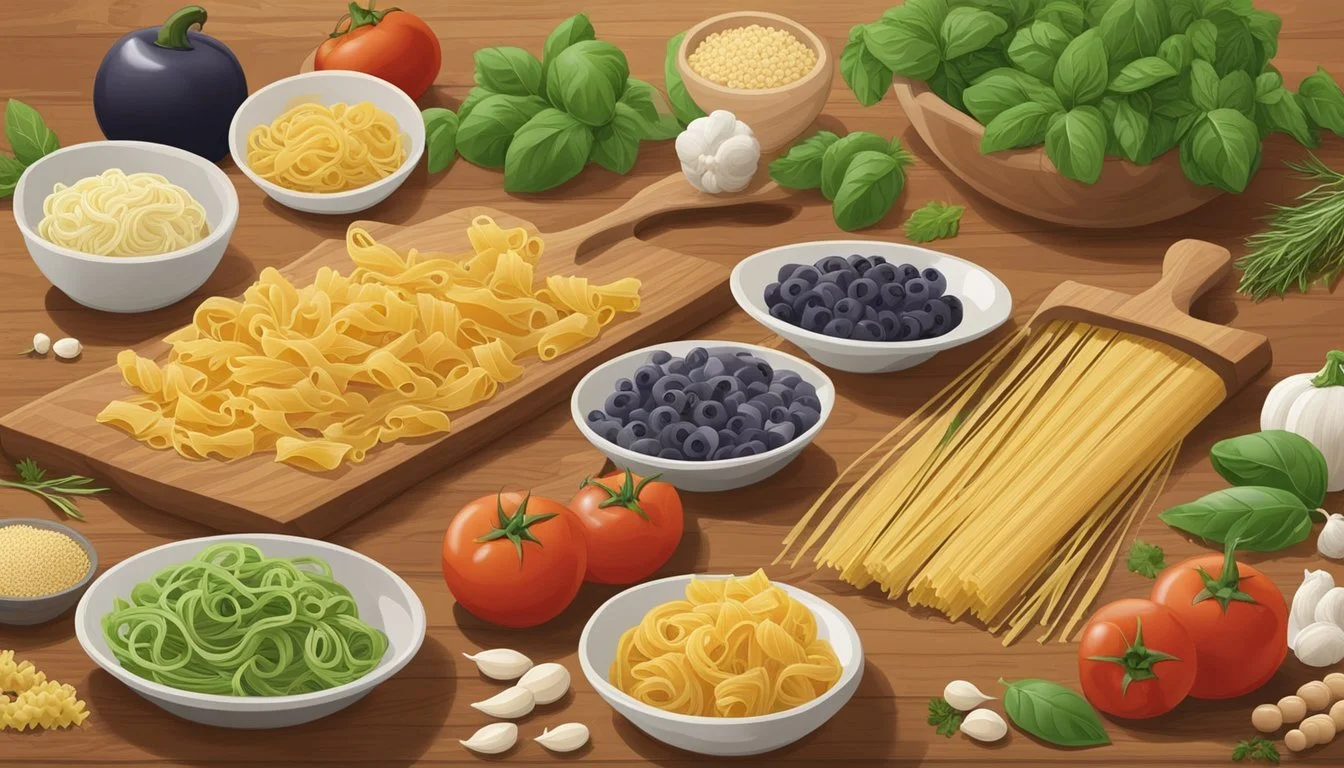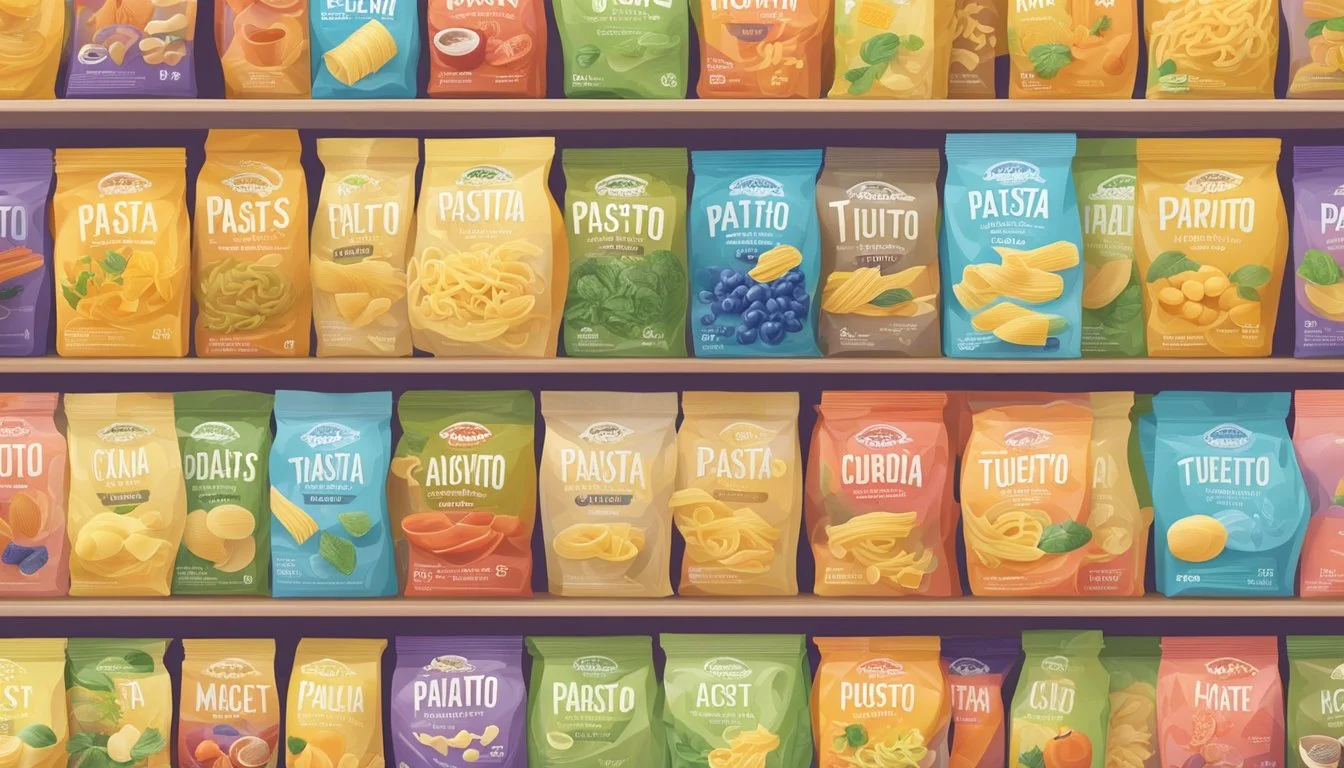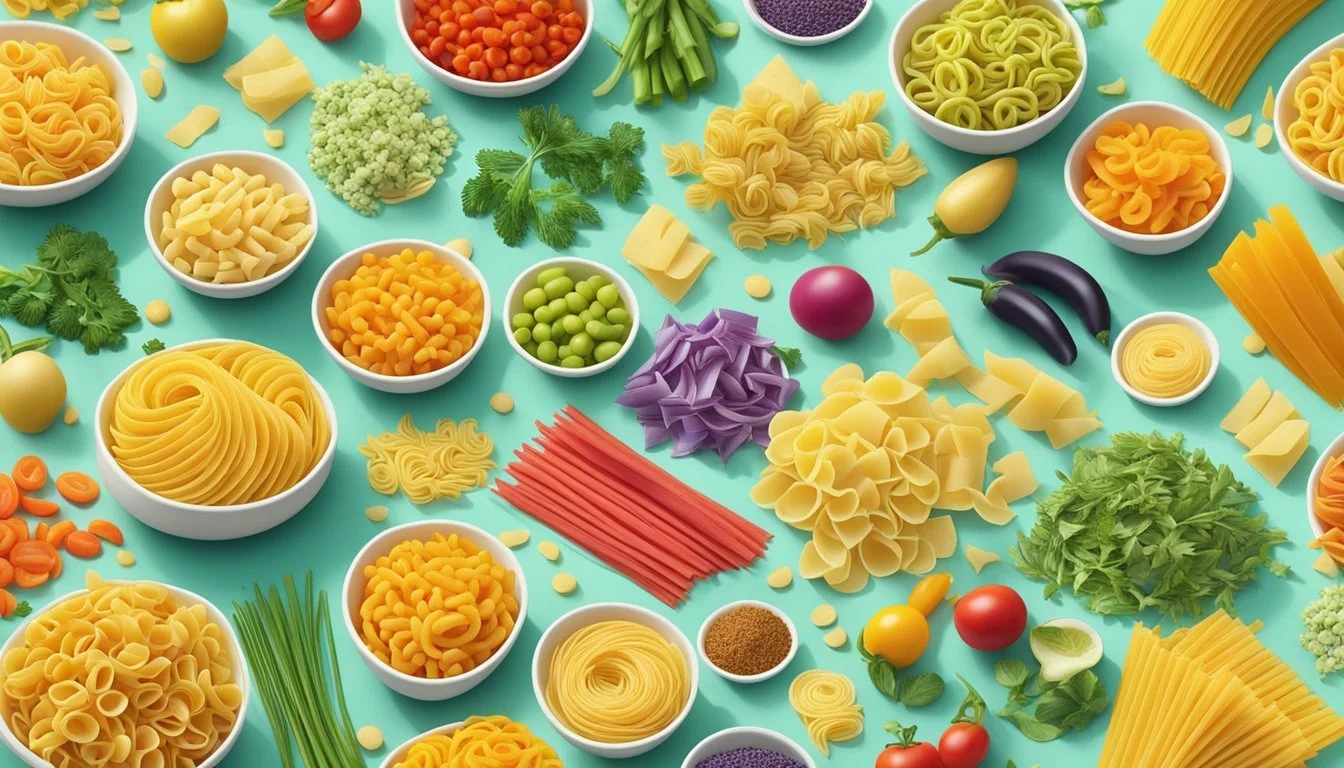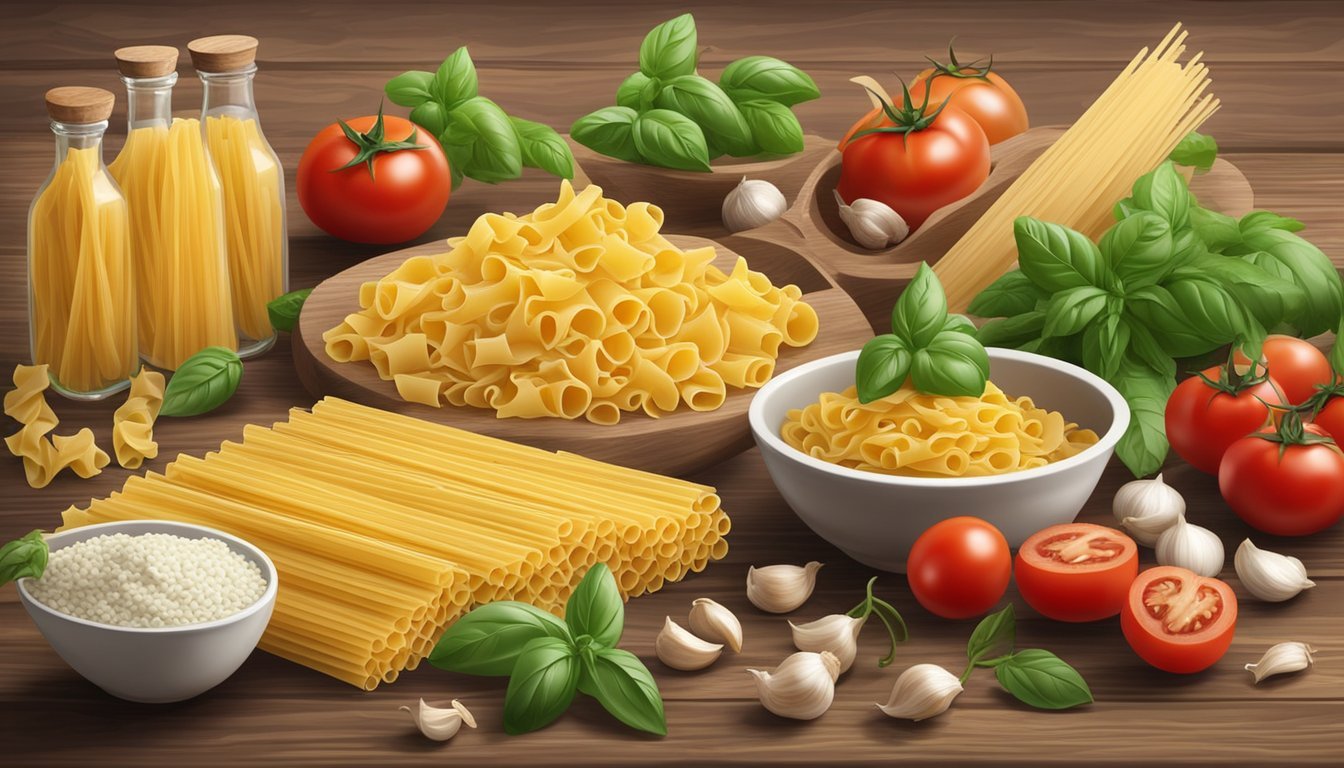Tubetto Pasta Substitutes
Top Alternatives for Your Favorite Dishes
Tubetto pasta (What wine goes well with pasta?), known for its small, tube-like shape, is a versatile ingredient in many Italian dishes. It's often used in soups and casseroles where its size allows it to blend well with other components such as vegetables, beans, and meat. The pasta's ability to hold sauce and small ingredients within its hollow structure makes it a popular choice for both home cooks and professional chefs. When tubetto pasta is not available or when dietary restrictions necessitate a substitute, several alternatives offer similar characteristics, ensuring the integrity of the dish is maintained.
Substitutes for tubetto pasta can be chosen based on their shape, size, and texture to closely mimic the original ingredient. Rigatoni, slightly larger and ridged, is a common substitute as it can also hold sauces well and provides a comparable bite. Smaller pastas like corallini, which are similar to tubetto but with a narrower tube, work particularly well in lighter soups or broths. For those seeking gluten-free options, grains like rice or quinoa, (What wine goes well with quinoa?) whilst not pastas, can serve as suitable replacements in terms of texture and substance when incorporated into recipes originally calling for tubetto pasta.
Understanding Tubetto Pasta
Originating from Italy, specifically the Campania region, tubetto pasta is an integral part of Italian cuisine. As implied by its Italian name, which translates to "little tubes," tubetto pasta is characterized by its small, cylindrical shape.
Texture and Versatility
Tubetto stands out for its dense, chewy texture which allows it to hold onto sauces well. This pasta variety is designed to absorb flavors effectively, making it a favorite for soups, casseroles, and salads where it can soak up the surrounding juices and dressings.
Aspect Detail Shape Short, tube-shaped Size Typically 0.5 in wide, 0.25 in long Texture Chewy, dense Flavor absorption High Common Uses Soups, casseroles, salads
Types of Pasta in Italian Cuisine
While various types of pasta like spaghetti and linguine pair well with lighter sauces, tubetto's architecture allows it to stand up to heartier fares. This characteristic makes it similar in use to other short, tube-shaped pastas like rigatoni, which also have a substantial presence amongst the vast array of pasta types celebrated in Italy.
In conclusion, tubetto's distinct structure and texture contribute to its role as a versatile and flavor-absorbing element in various dishes across Italian cooking. Its ability to complement different sauces and ingredients showcases the thoughtful design behind this pasta type.
Reasons for Substituting Tubetto Pasta
Substituting Tubetto pasta is often considered due to various factors ranging from health to personal preference. Below we explore the key motivations behind such substitutions.
Dietary Restrictions
Those with gluten intolerance or celiac disease may seek alternatives to Tubetto pasta, as it is traditionally made from durum wheat which contains gluten. Gluten-free options like Risoni pasta cater to their needs, allowing them to enjoy pasta dishes (What wine goes well with pasta dishes?) safely. Additionally, individuals with allergies to specific grains or ingredients in conventional Tubetto pasta may also need suitable substitutes to avoid adverse reactions.
Availability Issues
Tubetto pasta may not always be readily available in some regions or stores, prompting cooks to find replacements. Common substitutions include more widely available pastas like Rigatoni, which share similar characteristics such as a tube shape and ridges.
Texture Preferences
Personal taste in texture can drive someone to choose a different pasta. Tubetto pasta has its unique bite, but one might prefer the texture contrasts provided by varieties like Corallini or Acini Di Pepe, which can offer a different mouthfeel in soups and broths.
Nutritional Considerations
Nutritional goals such as low-carb diets or calorie control may not align with traditional pasta options. Substitutes like orzo can be integral in managing these dietary plans. For those seeking pastas with a high nutritional value, alternatives enriched with fiber, iron, vitamins, or other health benefits may be more appropriate to support their overall wellness goals.
Types of Pasta Substitutes
When exploring alternatives to Tubetto pasta, one finds a variety of substitutes that cater to dietary preferences, such as grain-based, legume-based, and vegetable-based options, as well as specialty products designed for specific dietary needs.
Grain-Based Substitutes
Grain-based pasta substitutes include options that offer a similar texture and flavor profile to traditional pasta but with different nutritional content. Here are a couple of prominent grain-based alternatives:
Rice Pasta: Rice noodles or pasta made from brown, white, or wild rice serve as a gluten-free option that is lighter in texture.
Other Grains: Pastas made from barley, farro, or quinoa provide a robust and nutty flavor, and they are rich in nutrients and fibers which make them a wholesome choice.
Vegetable-Based Substitutes
These substitutes are made primarily from vegetables and are a low-carb, gluten-free alternative to traditional pasta:
Zucchini Noodles (Zoodles): Produced using a spiralizer, zucchini can be transformed into pasta-like strands, delivering a pasta experience with a fraction of the calories and carbs.
Eggplant: Sliced and baked or grilled, eggplant can serve as a lasagna noodle substitute, giving dishes a hearty texture and rich flavor.
Legume-Based Substitutes
Legume-based noodles offer a high-protein, high-fiber alternative to traditional pasta:
Lentil and Chickpea Pasta: These substitutes are gaining popularity due to their favorable nutritional profile, catering to those seeking protein-rich, gluten-free options.
Specialty Substitutes
Specialty substitutes cater to specific dietary restrictions and preferences:
Gluten-Free Noodles: Various brands offer gluten-free alternatives made from a combination of non-wheat flours to meet dietary needs.
Kelp and Shirataki Noodles: Known for being low in calories and carbs, they are suitable for those on a ketogenic or low-carb diet.
Pasta Substitute Considerations
When replacing tubetto pasta, it is crucial to consider how the substitute complements the dish in terms of flavor, texture, cooking times, and nutrient content.
Flavor Pairing
Substitutes for tubetto pasta should complement the delicate flavor profiles often associated with pasta dishes. Whole grain alternatives like brown rice pasta can introduce a nuttier taste, suitable for robust sauces, while shirataki noodles, being neutral, partner well with light, creamy sauces.
Cheese: A substitute that carries a flavor enhancing the cheese is ideal.
Sauces: Select a pasta substitute that harmonizes with the sauce's flavor profile.
Substitute Textures
The texture of a pasta alternative contributes significantly to the eating experience. Substitutes vary from soft to firm, with options like spiralized vegetables offering a crunchier texture, and others like quinoa pasta providing a more traditional al dente bite.
Quinoa Pasta: Often firm to the bite and absorbs sauce well.
Spiralized Vegetables: A lighter, crisper texture, not suitable for heavy sauces.
Cooking Time Variations
Different pasta substitutes will require varying cooking times. Rice noodles may cook in just a few minutes, while substitutes like lentil or chickpea pasta might need longer to achieve the desired firmness. This can affect the overall preparation time of the dish.
Substitute Cooking Time Rice Noodles 3-5 minutes Chickpea Pasta 7-9 minutes or until al dente
Nutrient Content
Many pasta alternatives offer unique nutritional profiles. Substitutes like legume-based pasta provide higher protein content relative to traditional pasta, which can be beneficial for dietary balance.
Protein: Opt for legume-based pastas for a higher protein count.
Fiber: Whole grain substitutes are typically higher in fiber than traditional pasta.
Common Pasta Substitutes
When looking to replace tubetto pasta in a recipe, one may consider various rice and grain alternatives or specific pasta shapes that suit particular dishes. These substitutes not only provide similar texture and shape but can also contribute to the dish's nutritional profile.
Rice and Grain Alternatives
For dishes such as pasta e fagioli or minestrone soup, grains such as arborio rice or couscous can serve as hearty alternatives to pasta. Brown rice and rice pasta are excellent gluten-free options that maintain the desired consistency in soups and stews:
Arborio Rice: An Italian short-grain rice known for its creamy texture, ideal for minestrone.
Couscous: Small granules of durum wheat that can be a quick substitute for small pasta shapes.
Adaptations for Soups and Salads
Small pasta shapes like ditalini, tubettini, and orzo are often used in Italian soups and salads. For those looking to explore beyond traditional pasta types, the following substitutes can be included:
Fregula: A Sardinian pasta similar to large couscous; great in soups.
Pastina: A generic term for tiny pasta shapes that are perfect in brothy soups.
Acini di pepe: Small, round pasta that can substitute for stelline in soups.
Pasta Alternatives for Cold Dishes
For cold dishes such as pasta salad, the texture is key. Substituting regular pasta with alternatives that hold up well to dressing and can be served at a cool temperature is essential. Here are suitable options for cold servings:
Risoni (Orzo): Resembles rice grains and is ideal for pasta salads.
Ditalini: Short tubes that work well in a classic macaroni salad.
Each option should be selected based on the recipe and desired texture, ensuring that the dish maintains its characteristic flavors and experience.
Pairing Substitutes with Sauces and Recipes
When substituting Tubetti pasta, it’s important to pair the alternative pasta with the appropriate sauce to maintain the dish's integrity. Different pasta shapes interact with sauces in unique ways, impacting the final flavor and texture of a recipe.
Heavy and Creamy Sauces
Tubetti: Engages well with thick sauces due to its tube shape.
Substitutes:
Small macaroni: Their size and hollow center make them a good vessel for creamy sauces like Alfredo or a rich cheese sauce.
Corallini: Slightly smaller, yet still captures heavy sauces well.
For sauces that have a thick and rich consistency, the substitutes need to be sturdy enough to hold these lavish toppings without becoming overwhelmed. The chosen pasta should not only complement the sauce but also ensure that each bite is as satisfying as the intended Tubetti recipes.
Light and Delicate Sauces
Tubetti: Traditionally paired with lighter tomato-based or olive oil sauces.
Substitutes:
Rice noodles: They are delicate, pairing seamlessly with light sauces like lemon and herb dressings.
Brown rice pasta: Offers a slightly nutty flavor that enhances the lighter sauces.
Light sauces require a pasta that allows their subtle flavors to shine through. Substitutes here should not overpower the sauce but should rather act as a complementary base, allowing the lighter, more fluid sauces to coat each piece evenly.
Cold Pasta Dishes and Salads
Tubetti: Its structure retains its texture well when cooled.
Substitutes:
Kelp noodles: Excellent for cold dishes, providing a unique texture and a neutral taste.
Shirataki noodles: They stand up to the task in cold salads, offering a gluten-free alternative.
Cold pasta dishes often hinge on the pasta’s ability to maintain texture and mix well with various dressings. Substitutes for Tubetti in these dishes should similarly hold their shape and not become soggy, allowing for a pleasant contrast against crunchy vegetables or a smooth marinara dressing.
Cooking Techniques for Substitutes
The cooking techniques for perfect pasta substitutes involve achieving the quintessential al dente texture and ensuring the pasta maintains its shape, particularly in soups.
Achieving Al Dente Texture
To achieve the sought-after al dente texture in pasta substitutes such as rigatoni or fettuccine, one must pay close attention to cooking times. For example:
Rigatoni by brands like Barilla and De Cecco typically requires 10-13 minutes of boiling. Start checking for doneness at the 10-minute mark to avoid overcooking.
Fettuccine—another viable substitute—should be boiled for approximately 10-12 minutes. Stir occasionally to prevent sticking.
Maintaining Shape in Soups
Substitutes used in soups, such as Delallo’s orzo or Goody's macaroni, need to hold their shape in liquid. Here are specific techniques:
Add pasta reggia or other small tubular pasta to the soup 10-15 minutes before it's finished cooking to avoid them becoming too soft.
Rinse pasta under cold water after boiling and before adding to the soup. This halts the cooking process and removes excess starch, which can lead to a gummy texture.
Health Considerations of Pasta Substitutes
When considering replacements for tubetto pasta, health benefits take precedence. A variety of pasta substitutes are available that can offer individuals a high nutritional value compared to conventional pasta.
Legume-based Pasta: Legume-based pastas, such as those made from chickpeas, provide a high-protein, high-fiber option. With a notable content of vitamins and minerals, they cater to those seeking both gluten-free and nutritious alternatives.
Whole Grain Pasta: Whole grain options like brown rice pasta retain more natural fiber and nutrients than white pasta. They support digestion and can contribute to a feeling of fullness, thus aiding weight management.
Vegetable Noodles: Substitutes such as spiralized zucchini or squash noodles are low in carbohydrates and calories, making them suitable for low-carb diets. They also add a burst of vitamins to any dish.
Additional Considerations:
Low-Carb Options: Shirataki noodles and kelp noodles are almost carb-free and can fit into ketogenic and other low-carbohydrate diets.
Vitamins & Minerals: Many substitutes are fortified with additional nutrients, enhancing their health profile.
When selecting a pasta substitute, one should assess individual dietary needs and preferences. Substitutes vary greatly in texture, taste, and cooking requirements, but offer diverse health advantages that can align with personal health goals.
Exploring Global Pasta Substitutes
When finding alternatives to Tubetto pasta, one can look into the rich variety of pasta types from Europe, Asia, and the Middle East. Each region offers unique shapes and textures that complement different sauces and recipes.
European Substitutes
Italian Substitutes:
Farfalle: Known for its butterfly or bowtie shape, farfalle is similar in density to Tubetto, making it suitable for hearty sauces.
Conchiglie: These shell-shaped pastas come in two sizes; conchiglie can substitute Tubetto in soups and stews, while conchigliette is perfect for salads.
Greek Substitutes:
Anellini: This small, ring-shaped pasta works well in soups and cold salads as a stand-in for Tubetto.
Asian Substitutes
Japanese Substitutes:
Rice Noodles: Light and adaptable, rice noodles can be used in a range of dishes requiring Tubetto, taking on the flavors of the accompanying ingredients effectively.
Middle Eastern Substitutes
Israeli Couscous: Also known as pearl couscous, this pasta is a great substitute for Tubetto with its larger grains and chewy texture, ideal for absorbing flavors in a variety of dishes.
Rigatoni: Although originating from Italy, rigatoni has found its way into Middle Eastern cuisine where its tube-like shape and ridges are appreciated for catching and holding onto sauces.
Customizing Substitutes for Dietary Needs
When replacing tubetto pasta, it's important to consider the specific dietary requirements, be it for a gluten-free or a plant-based diet. Here, we will explore varied substitutes that cater to these dietary restrictions without compromising on taste and texture.
Gluten-Free Options
For individuals with gluten sensitivities or celiac disease, finding an alternative to the traditional wheat-based tubetto pasta is essential. Brown rice pasta is a popular gluten-free substitute that closely resembles the texture and flavor of regular pasta. Quinoa pasta, made from a blend of organic brown rice and organic quinoa flour, is another suitable option, offering the added health benefits of complete protein from quinoa. Consumers can enjoy a similar experience to eating traditional pasta while maintaining a gluten-free diet.
Vegetarian and Vegan Varieties
Plant-based diets require alternatives that are free from animal products, and the market offers an array of vegetarian and vegan pasta substitutes. Zucchini noodles, also known as "zoodles," are a nutritious and low-carb option perfect for those looking for a lighter, vegetable-based substitute. They can be spiralized and cooked to mimic the consistency of pasta. Additionally, kelp noodles and shirataki noodles are both vegan-friendly and offer distinct textures to diversify meal options. These substitutes, aside from fitting vegan dietary patterns, often come with lower calories and are rich in vitamins and minerals, further contributing to overall health.
Creative Twists with Pasta Substitutes
Exploring the variety of pasta substitutes not only caters to dietary needs but also brings a playful element to the dining table. Whether one opts for something stuffed or chooses pasta with unique shapes and textures, the culinary possibilities are both vast and exciting.
Stuffed Pasta Alternatives
For those who love traditional stuffed pasta like conchiglie, conchigliette provide a smaller but similarly satisfying alternative. One can easily fill these tiny 'shells' with a mixture of cheese, meat, or vegetables. These miniature shells bake well and are perfect for single-bite appetizers or as part of a salad.
Replacing classic tubetto in stuffed dishes, semolina flour-based substitutes maintain a similar firmness when cooked, which is essential in keeping the filling secure. The addition of ridges to the pasta surface can enhance the dish further by trapping additional sauce, resulting in a richer flavor.
Unique Shapes and Textures
When it comes to replacing tubetto pasta in non-stuffed recipes, the texture is important. Farfalle and farfalline, with their bow-tie shape and pinched middle, create a delightful mouthfeel and hold onto sauces nicely, similar to tubetto’s ridges.
For those seeking thin, delicate pasta, angel hair offers a fine substitute, especially with lighter sauces and in quick sauté dishes. While not as robust as tubetto, it cooks quickly and absorbs flavors well. Lasagna ribbon substitutes, though wider, can be sliced into smaller strips to mimic tubetto's size while retaining a hearty texture.
Final Thoughts on Tubetto Pasta Substitutes
When seeking alternatives to tubetto pasta, both shape and texture must be considered to maintain the integrity of the dish. Ideal substitutes should mimic tubetto's small, tube-like dimensions and firmness after cooking. Ditalini pasta emerges as a fitting substitute due to its similar size and tube shape, aligning perfectly in soups and stews.
For those steering away from traditional pasta, grains like orzo can play a convincing role, blending seamlessly into salads and side dishes while providing a pasta-like mouthfeel. However, one should note that orzo is a form of wheat pasta and not a gluten-free option.
In contrast, individuals with gluten sensitivity may find solace in rice or lentils, which, while diverging in shape, offer a compatible texture and are generous in nutritional content. Adopting cauliflower rice as a substitute lays the foundation for a grain-free alternative and offers an enhanced nutritional profile.
Noodles, though varied widely in shape, can often be cut down or used as is to approximate the Tubetto experience, especially in soups and stir-fries, where the noodle's character is less pronounced.
Below is a condensed guide to choosing a tubetto pasta substitute:
In Soups & Stews:
Ditalini
Broken Spaghetti
Orzo
Gluten-Free Needs:
Rice (Arborio, Basmati)
Quinoa
Lentils
Grain-Free/Special Diets:
Spiraled Vegetables (Zoodles)
Choosing a suitable substitute involves balancing dietary requirements, available ingredients, and desired dish outcomes. Knowledgable selection ensures meals remain delightfully familiar yet accommodating to all dining preferences.














